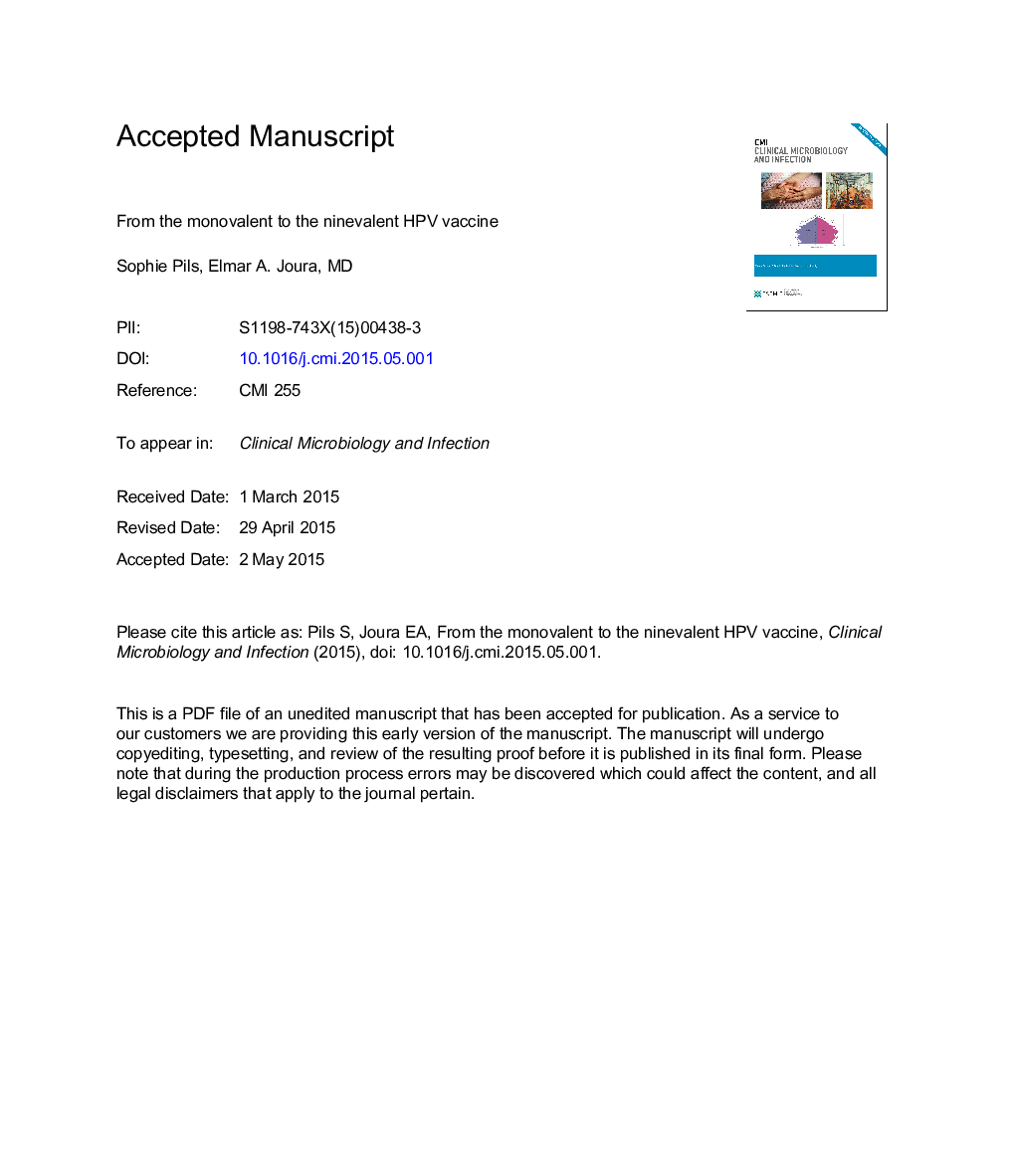| کد مقاله | کد نشریه | سال انتشار | مقاله انگلیسی | نسخه تمام متن |
|---|---|---|---|---|
| 6129273 | 1222154 | 2015 | 19 صفحه PDF | دانلود رایگان |
عنوان انگلیسی مقاله ISI
From the monovalent to the nine-valent HPV vaccine
دانلود مقاله + سفارش ترجمه
دانلود مقاله ISI انگلیسی
رایگان برای ایرانیان
کلمات کلیدی
موضوعات مرتبط
علوم زیستی و بیوفناوری
ایمنی شناسی و میکروب شناسی
میکروب شناسی
پیش نمایش صفحه اول مقاله

چکیده انگلیسی
An investigational monovalent human papillomavirus (HPV) 16 virus-like particle vaccine has been shown to prevent persistent infection and cervical disease related to HPV 16 and was proof of concept (2002). Designed to prevent the bulk of invasive cervical cancer, quadrivalent (HPV 6/11/16/18) and bivalent (HPV 16/18) vaccines have been available since 2006 and 2007, respectively. They are highly effective in preventing HPV 16/18-related cervical precancer; the quadrivalent version also prevents genital warts related to HPV 6/11. It has been shown that the precursors of vulvar, vaginal and anal cancer related to the vaccine types are effectively prevented. This led to a paradigm shift from a female-only cervical cancer vaccine to a vaccine for the prevention of HPV-related disease and cancer for both sexes. Vaccination before the start of sexual activity is most effective, and consequently most programs target 9- to 12-year-olds. Additionally, recent studies have proven the noninferior immunoresponse of a two-dose schedule in these age cohorts. Gender-neutral vaccination has become more common; it improves coverage and also provides protection to all males. Recently a nine-valent HPV vaccine (HPV 6/11/16/18/31/33/45/52/58) was licensed; it provides high and consistent protection against infections and diseases related to these types, with â¼90% of cervical and other HPV-related cancers and precancers potentially being avoided. Coverage is key. Efforts must be made to provide HPV vaccination in low-resource countries that lack screening programs. In countries with cervical cancer screening, HPV vaccination will greatly affect screening algorithms.
ناشر
Database: Elsevier - ScienceDirect (ساینس دایرکت)
Journal: Clinical Microbiology and Infection - Volume 21, Issue 9, September 2015, Pages 827-833
Journal: Clinical Microbiology and Infection - Volume 21, Issue 9, September 2015, Pages 827-833
نویسندگان
S. Pils, E.A. Joura,